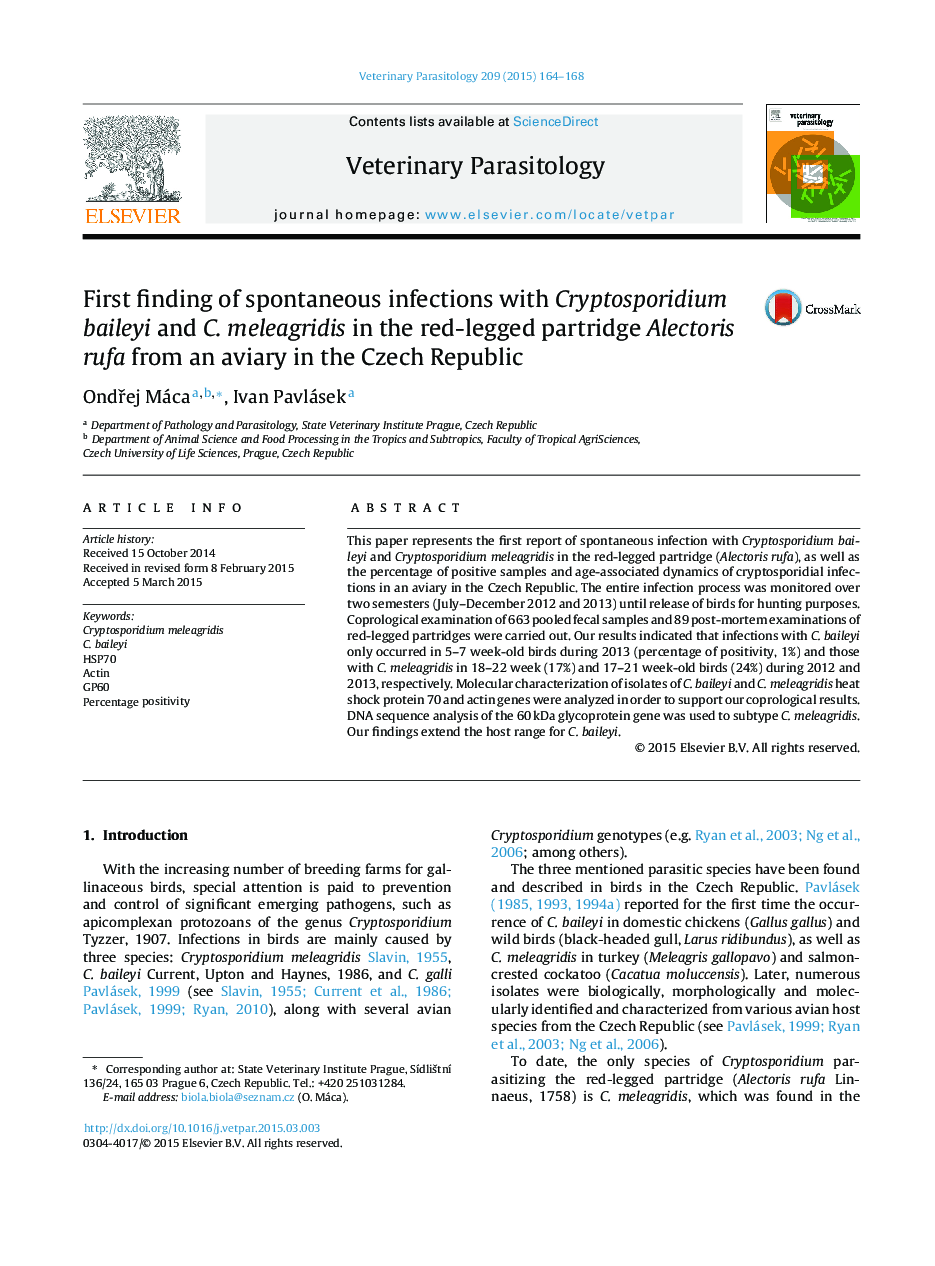| Article ID | Journal | Published Year | Pages | File Type |
|---|---|---|---|---|
| 5802713 | Veterinary Parasitology | 2015 | 5 Pages |
â¢Cryptosporidium meleagridis in farmed Alectoris rufa was detected for the first time in the Czech Republic and sub-typed by sequence analysis of the 60 kDa glycoprotein gene.â¢This bird also represents a new host for C. baileyi.â¢C. meleagridis oocysts were first observed in excreta from 17 week-old partridges over a 28-day infection period and were detected in 17-24% of samples.â¢Oocysts of C. baileyi appeared in excrements of partridges much earlier (5-7 weeks) in 1% of samples.
This paper represents the first report of spontaneous infection with Cryptosporidium baileyi and Cryptosporidium meleagridis in the red-legged partridge (Alectoris rufa), as well as the percentage of positive samples and age-associated dynamics of cryptosporidial infections in an aviary in the Czech Republic. The entire infection process was monitored over two semesters (July-December 2012 and 2013) until release of birds for hunting purposes. Coprological examination of 663 pooled fecal samples and 89 post-mortem examinations of red-legged partridges were carried out. Our results indicated that infections with C. baileyi only occurred in 5-7 week-old birds during 2013 (percentage of positivity, 1%) and those with C. meleagridis in 18-22 week (17%) and 17-21 week-old birds (24%) during 2012 and 2013, respectively. Molecular characterization of isolates of C. baileyi and C. meleagridis heat shock protein 70 and actin genes were analyzed in order to support our coprological results. DNA sequence analysis of the 60Â kDa glycoprotein gene was used to subtype C. meleagridis. Our findings extend the host range for C. baileyi.
